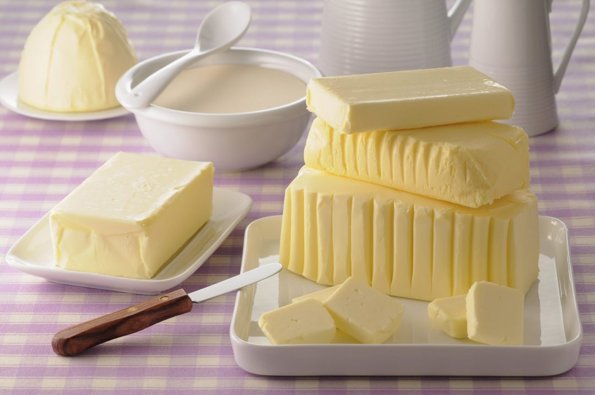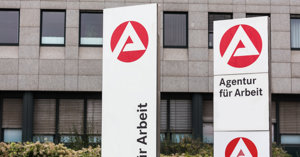
Germany’s Butter Prices Return to Two-Year Low
German discounters and supermarkets have cut the price of own-brand butter to €1.39, the lowest in over two years.
Butter price declines returned to German supermarket shelves this week, with major chains lowering the cost of a 250-gram pack of “Deutsche Markenbutter” private-label butter to €1.39—its lowest level in more than two years. According to a survey by the German Press Agency, the latest 10-cent reduction follows two price cuts in September and reflects a market shaped by higher milk output and relatively subdued demand.
What’s New — and Why It Matters
The new round of reductions, led by discount chains and quickly echoed by competitors, underscores a familiar pattern in German grocery retailing: when one major player moves, others often follow. Aldi said its “Milsani” Deutsche Markenbutter will now cost €1.39 on a permanent basis, a level not seen since roughly two years ago. Lidl announced that its “Milbona” 250-gram pack is likewise available at €1.39 “with immediate effect,” and Norma moved in step. The cuts extend beyond conventional butter; retailers said several additional butter items—including plant-based alternatives—would also become cheaper.
For consumers, the headline change restores a price last observed in summer 2023, after a period of historic volatility that culminated in a record of €2.39 in October 2024. For the market, the move signals how shifts in raw-milk supply and composition can translate quickly into shelf prices when demand is tepid.
From Record Highs to Renewed Discounts
Over the past two years, butter has swung from bargain-level pricing to record highs and back. In most stores during summer 2023, shoppers paid €1.39 for the most affordable private-label pack. Within twelve months, that figure rose by nearly 40 percent, peaking at €2.39 in October 2024—an all-time high. Prices began to fall again in February. In September of this year, retailers implemented two successive permanent reductions on private-label butter: down 20 cents to €1.79 in mid-September, then down another 30 cents to €1.49 at the end of the month. This week’s 10-cent cut brings the sticker back to €1.39.
The present easing reflects classic supply-and-demand dynamics in the dairy sector. “In Germany and in the EU, more milk is being produced in autumn 2025 than in the previous year,” said market expert Kerstin Keunecke of Agrarmarkt Informations-Gesellschaft (AMI). Against that increased supply, she described parts of demand as restrained, a combination that exerts downward pressure on prices.
Milk Output and Fat Content
Beyond volumes alone, the composition of raw milk matters. Keunecke pointed to a higher fat content in the milk stream as another factor helping producers and retailers bring prices down. The logic is straightforward: for butter production, the more fat present in raw milk, the fewer liters are required to achieve a given output of butterfat. When the average fat share rises, the system yields butter more efficiently, easing cost pressure along the chain.
That micro-mechanism dovetails with broader market realities. When German grocers announce permanent price cuts on a staple like butter, rivals typically respond quickly, particularly in a category where private-label offerings are prominent and price perception is highly visible to consumers. Aldi explicitly cast its move as a signal of “good food at the best price,” and Lidl stressed that customers will also benefit from lower prices in additional butter items, including vegan options.
Key retail price points for a 250-gram pack of private-label “Deutsche Markenbutter”:
| Date/Period | Price (EUR) | Notes |
|---|---|---|
| Summer 2023 | 1.39 | Baseline for the cheapest private-label pack |
| October 2024 | 2.39 | Record high |
| Mid-September 2025 | 1.79 | First permanent cut (−€0.20) |
| Late September 2025 | 1.49 | Second permanent cut (−€0.30) |
| This week (Autumn 2025) | 1.39 | New reduction (−€0.10), two-year low |
Supply-side context:
- AMI reports increased milk production in Germany and across the EU in autumn 2025 compared with the previous year.
- Higher raw-milk fat content reduces the volume of milk needed for butter production, improving output efficiency.
Retailers’ Positioning and Category Implications
The price leader narrative is particularly influential in Germany’s competitive grocery environment, where discount banners frequently anchor consumer expectations. Aldi said the €1.39 level is now “permanent,” reinforcing a stable price signal after months of steady markdowns. Lidl’s messaging also emphasized continuity: the chain described €1.39 as a return to a price point last seen “about two years” ago, and flagged broader price relief across butter-related items. Norma communicated similar reductions.
For the category, the scope of cuts matters. While the headline is the conventional 250-gram private-label pack, retailers’ reference to additional butter products—and to plant-based alternatives—suggests a wider recalibration. That breadth could reinforce the perception that the entire “butter and alternatives” shelf is normalizing after a prolonged period of volatility.
Supply Up, Demand Cautious
Keunecke’s assessment highlights a two-pronged driver: more milk and cautious consumption. On the production side, higher volumes in autumn 2025 create a larger pool of raw material at a time when fat content also offers efficiency gains. On the consumption side, the description of “partly restrained” demand implies that the market does not face immediate pressure to bid prices up, allowing retailers to maintain and extend reductions. The interaction between these elements aligns with the sector’s recent price path: sustained cuts since February, punctuated by September’s sequential reductions and capped by this week’s move back to €1.39.
Risks & Scenarios
While the current trend favors consumers, several contingencies could influence where prices go from here:
- Supply fluctuations: If milk output contracts in Germany or the broader EU, the present surplus could narrow, reducing the downward pressure on butter prices. Fat content variability: A decline in average raw-milk fat content would make butter production less efficient, nudging costs upward.
- Demand normalization: If demand strengthens—seasonally or due to changing consumption patterns—retailers might have less incentive to maintain aggressive discounts. Competitive dynamics: The German retail market often moves in lockstep; however, an isolated strategic shift by a major chain could reshape the price ceiling or floor in the short term.
These are standard sectoral considerations rather than predictions. The current facts—higher milk volumes, higher fat content, and restrained demand—are consistent with the reductions announced this week.
What Consumers Are Likely to See
In practical terms, shoppers should encounter the €1.39 price point for 250-gram private-label “Deutsche Markenbutter” across major chains, with prominent discount grocers confirming the permanent nature of the cut. Given retailers’ statements, customers may also notice lower price tags on additional butter items and vegan alternatives. The breadth of the reductions, and their framing as “permanent,” align with a category-wide reset rather than a fleeting promotion.
Why have butter prices fallen now?
Because supply has increased and demand is partly restrained. According to AMI’s Keunecke, milk production in Germany and the EU is higher this autumn than a year ago. A higher fat content in raw milk also makes butter production more efficient, reinforcing the downward pressure on prices.
Which retailers have cut prices to €1.39?
Aldi said its “Milsani” private-label butter is now permanently €1.39, and Lidl conveyed that its “Milbona” 250-gram pack is likewise €1.39 “with immediate effect.” Norma communicated similar moves. The reductions typically propagate quickly across the sector when one chain acts.
Is this only about standard butter?
No. Retailers said additional butter products are also cheaper, including some plant-based options. The primary benchmark remains the 250-gram private-label “Deutsche Markenbutter,” but chains indicated broader category adjustments.
How does milk fat content influence butter pricing?
Butter is produced from the fat in milk. When the average fat content rises, fewer liters of milk are required to yield the same amount of butterfat. That efficiency can lower production costs and support retail price reductions, especially when supply is ample and demand is subdued.
Volatility, Then Normalization
Butter’s price path since 2023 reflects a period of exceptional volatility across food categories, followed by a gradual normalization. The journey from €1.39 in summer 2023 to a record €2.39 in October 2024 and back again to €1.39 in autumn 2025 illustrates how swiftly commodity-linked categories can adjust when upstream conditions change. The cuts since February show sustained momentum; the two September reductions and the new 10-cent move this week make that momentum visible on the shelf.
The current alignment—greater milk availability and a more favorable fat profile—has eased pressure on the cost base. That dynamic, combined with German grocers’ habit of rapid competitive matching, has restored a price point that consumers will recognize from two summers ago. Whether the €1.39 level endures will depend on how supply, fat content, and demand evolve into winter and beyond.
A Consumer-Friendly Price Point, Backed by Supply
German shoppers are seeing a familiar number on butter shelves again. The €1.39 sticker for a 250-gram pack of private-label “Deutsche Markenbutter” is back, and major chains have cast it as a lasting change rather than a temporary promotion. The rationale is clear: more milk in the system, a higher fat share easing production, and demand that has not pushed prices up. Additional butter items—including plant-based alternatives—are also on track to be cheaper, amplifying the category impact.
From here, the key variables are the ones the dairy sector knows well: production volumes, raw-milk composition, and consumer appetite. For now, those indicators support the present reductions. If they hold through the season, the return to €1.39 could set a new baseline—not just for the standard 250-gram pack, but for the broader butter shelf that German shoppers navigate each week.
Source: dpa.com






